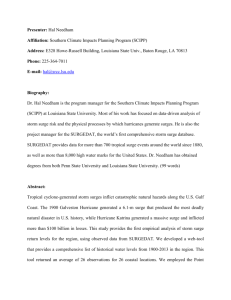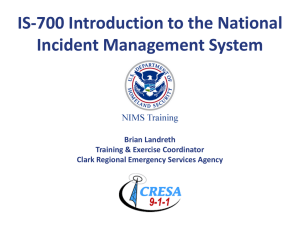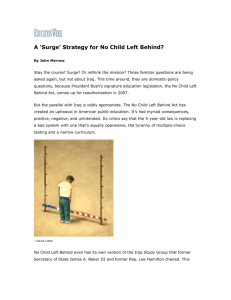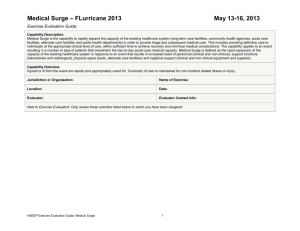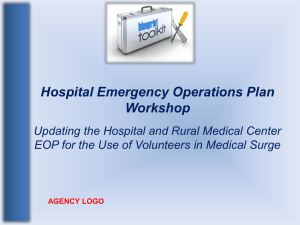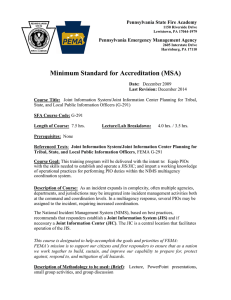Approval Signatures
advertisement
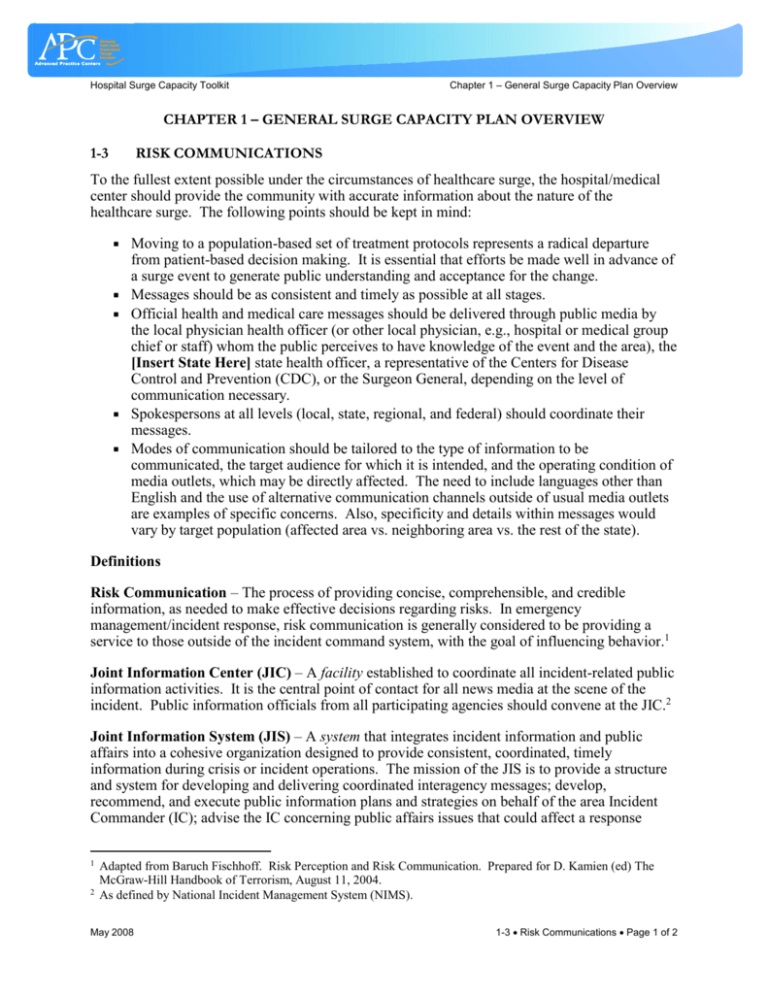
Hospital Surge Capacity Toolkit Chapter 1 – General Surge Capacity Plan Overview CHAPTER 1 – GENERAL SURGE CAPACITY PLAN OVERVIEW 1-3 RISK COMMUNICATIONS To the fullest extent possible under the circumstances of healthcare surge, the hospital/medical center should provide the community with accurate information about the nature of the healthcare surge. The following points should be kept in mind: Moving to a population-based set of treatment protocols represents a radical departure from patient-based decision making. It is essential that efforts be made well in advance of a surge event to generate public understanding and acceptance for the change. Messages should be as consistent and timely as possible at all stages. Official health and medical care messages should be delivered through public media by the local physician health officer (or other local physician, e.g., hospital or medical group chief or staff) whom the public perceives to have knowledge of the event and the area), the [Insert State Here] state health officer, a representative of the Centers for Disease Control and Prevention (CDC), or the Surgeon General, depending on the level of communication necessary. Spokespersons at all levels (local, state, regional, and federal) should coordinate their messages. Modes of communication should be tailored to the type of information to be communicated, the target audience for which it is intended, and the operating condition of media outlets, which may be directly affected. The need to include languages other than English and the use of alternative communication channels outside of usual media outlets are examples of specific concerns. Also, specificity and details within messages would vary by target population (affected area vs. neighboring area vs. the rest of the state). Definitions Risk Communication – The process of providing concise, comprehensible, and credible information, as needed to make effective decisions regarding risks. In emergency management/incident response, risk communication is generally considered to be providing a service to those outside of the incident command system, with the goal of influencing behavior.1 Joint Information Center (JIC) – A facility established to coordinate all incident-related public information activities. It is the central point of contact for all news media at the scene of the incident. Public information officials from all participating agencies should convene at the JIC.2 Joint Information System (JIS) – A system that integrates incident information and public affairs into a cohesive organization designed to provide consistent, coordinated, timely information during crisis or incident operations. The mission of the JIS is to provide a structure and system for developing and delivering coordinated interagency messages; develop, recommend, and execute public information plans and strategies on behalf of the area Incident Commander (IC); advise the IC concerning public affairs issues that could affect a response 1 2 Adapted from Baruch Fischhoff. Risk Perception and Risk Communication. Prepared for D. Kamien (ed) The McGraw-Hill Handbook of Terrorism, August 11, 2004. As defined by National Incident Management System (NIMS). May 2008 1-3 Risk Communications Page 1 of 2 Hospital Surge Capacity Toolkit Chapter 1 – General Surge Capacity Plan Overview effort; and control rumors and inaccurate information that could undermine public confidence in the emergency response effort.3 Realities of Risk Communication4 Telling the truth increases credibility Informing the public of your progress will help maintain order Bad communication can escalate the situation Communication is the job of everyone who deals with people during a crisis Who Needs Information in a Crisis5 Victims – sick, wounded, contaminated Families of victims and non-victims Personnel – clinical and medical staff, support staff, volunteers, resource personnel, security Worried-Well – internal and external Emergency Responders – community, state, national Media Responding to the Worried-Well6 People who are upset have difficulty hearing and understanding. It is important to acknowledge their fear and concern and provide a gathering place and resources such as counselor, clergy, phone, TV news, water, and food. It is also important to provide accurate information as it becomes available even if it’s not good news. The Public Information Officer (PIO) or designee should offer regular updates which avoid jargon and provide actionable next steps. Planning Recommendations To help you develop your hospital’s risk communications plan, you may refer to the following: 3 4 5 6 Centers for Disease Control and Prevention (CDC) Emergency and Risk Communication (provides training curricula and tools on crisis and emergency risk communication for healthcare providers). As defined by NIMS. Adapted from: Navy Environmental Health Center (NEHC) Risk Communication Program. ibid. ibid. May 2008 1-3 Risk Communications Page 2 of 2


